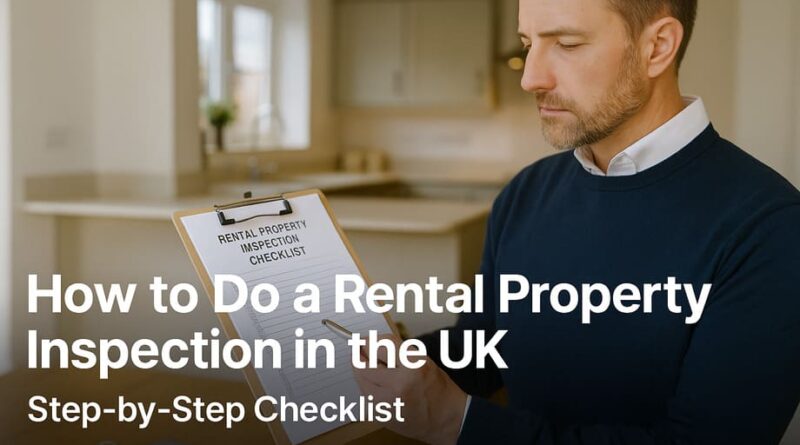How to Do a Rental Property Inspection in the UK (Step-by-Step Checklist)
Whether you’re a landlord or tenant, a rental property inspection is one of the most important steps in managing a tenancy. Done correctly, it helps maintain the property, prevents disputes, and ensures both sides understand their responsibilities.
In this guide, you’ll get a step-by-step checklist for conducting a rental property inspection in the UK, plus practical tips to make the process smooth and stress-free.
Why Property Inspections Matter
- Protects landlords: Ensures damage or neglect is spotted early.
- Protects tenants: Prevents unfair charges by recording the true condition.
- Helps with compliance: Safety checks (gas, electrics, smoke alarms) are easier to verify.
- Supports deposit claims: Written and photographic evidence strengthens your position in disputes.
Step-by-Step Checklist for a Rental Property Inspection
1. Give Proper Notice
In the UK, landlords must give tenants at least 24 hours’ written notice before an inspection, and it should be at a reasonable time.
2. Bring the Right Documents
- Tenancy agreement
- Previous inspection reports
- Property inventory and schedule of condition
3. Inspect Room by Room
Check the following areas systematically:
- Living areas: Walls, floors, windows, doors, light fixtures.
- Kitchen: Appliances, cupboards, worktops, taps, extractor fans.
- Bathroom: Toilets, sinks, showers/baths, tiles, ventilation.
- Bedrooms: Carpets, wardrobes, windows, furniture.
- Hallways/stairs: Bannisters, flooring, lighting.
4. Check Utilities and Safety Features
- Gas, electric, and water meters.
- Heating system and boiler.
- Smoke alarms and carbon monoxide detectors.
- Fire exits and extinguishers (if applicable).
5. Take Photos and Notes
Always take dated photographs of any damage or repairs needed. This provides evidence later if disputes arise.
6. Discuss Issues with the Tenant
- Agree on repairs and timelines.
- Record tenant concerns (e.g., damp, mould, broken fixtures).
- Encourage open communication to avoid conflicts.
7. Sign and Store the Report
Both landlord and tenant should sign the inspection report. Keep a copy for your records and provide one to the tenant.
How Often Should Inspections Be Done?
- Start of tenancy: Mandatory check-in inspection with an inventory.
- During tenancy: Every 3–6 months to spot issues early.
- End of tenancy: Essential check-out inspection to compare against the original inventory.
Common Mistakes to Avoid
- Skipping photos or written notes.
- Forgetting to check outdoor areas (gardens, sheds, garages).
- Not asking tenants about their own concerns.
- Failing to follow up on needed repairs.
Final Thoughts
A rental property inspection doesn’t have to be stressful. By following a clear checklist, landlords and tenants can protect themselves, keep the property in good condition, and avoid future disputes.
Remember, after each inspection, always update your records with a detailed property inventory report. This will give you peace of mind and legal protection.
FAQ
1. Do landlords have to give notice before inspections?
Yes. UK law requires at least 24 hours’ notice in writing.
2. Can tenants refuse an inspection?
They can request to reschedule, but they cannot unreasonably refuse access if proper notice is given.
3. How long does a rental inspection take?
Usually between 30 minutes and 1 hour, depending on property size.
4. Who pays for repairs found during inspections?
It depends: landlords cover general maintenance, while tenants may be liable for damage beyond fair wear and tear.
